(960 products available)







































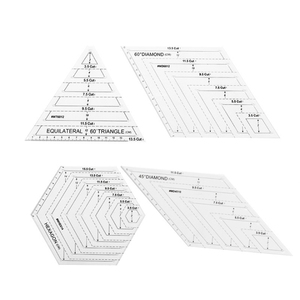

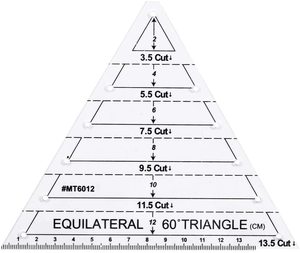
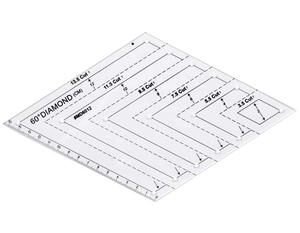
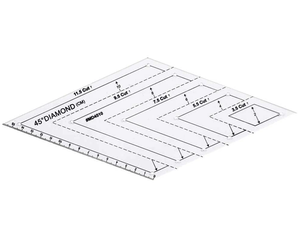
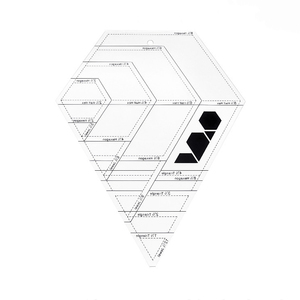












 Ready to Ship
Ready to Ship






















































































































There are several kinds of 45-degree triangle rulers, and some can even combine other tools' functions. They are all made in such a way that a single triangle with two angles of 45 degrees and one of 90 can proportion the different sizes or magnitudes of the angles of other polygons or figures.
A plastic 45-degree triangle ruler is very common among students in school and college. They are affordable and not hard to carry around, though they might break if not handled well. Simple 45-degree triangles consist of three lines: two of them parallel, and the third one meets the other two at an angle of 45 degrees. The best part is that one can see through most plastic triangles, which allows them to set their lines or measurements well when drawing. Plastic triangles are great for doing simple, fast work.
Metal 45-degree triangle rulers are stronger and more rigid than 45-degree plastic triangular rulers. The metal construction won't bend or break as easily, so it can be used for more precise or tough jobs. A 45-degree right triangle has one 90 turn and two 45 turns, making it perfect for helping an artist or engineer draw exact angles. Most metal triangles have smooth edges that won't get dull like a knife from all the sharpening. Even after lots of use, a metal triangle stays good at making straight guides for lines.
Etched scale 45-degree triangle rulers have marks on the sides that won't rub off. This makes it easy to measure different things exactly each time. A 45-degree triangle with etched scales is helpful for detail work where good measurements matter most. The strong material and permanent lines let one do lots of tasks without losing the ruler's accuracy. It is also made of metal or plastic, so depending on which one one is getting, it could be flexible or strong. The etched scales ensure that they stay visible even after heavy use or wear on the ruler. This combines the right angle triangle shape with permanent markings for exact measuring always.
Some rulers combine a protractor with 45-degree triangles. This lets one measure and make designs at the same time. The other angles can be checked with the protractor part, which makes this ruler good for complicated shapes. Having both tools built together saves time since one doesn't have to switch between them all the time. The protractor and 45-degree triangle shape work together - the protractor shows any angle, while the triangle keeps it straight and true. Using the 45-degree triangles lets them create designs with exact right angles.
The design of a 45-degree triangle ruler is important for its function. It has to have the right angles and good materials to work well. The ruler shape and how it is made affect how easy it is to use, how accurate it is, and how long it will last. Below are some elements that affect the design.
The triangle shape of a 45-degree triangle ruler is chosen carefully to make it useful for drawing straight lines and exact angles. A right triangle with one 90-degree angle and two 45-degree angles can create squares, diamonds, and other shapes that require equal angle sides. The two angled sides are the same length to make perfect isosceles triangles. This simple shape is easy to use and helps the designer achieve symmetry and balance in their work.The sharp edges also help this triangle shape make clean cuts through paper, fabrics, or other drawing materials. Blunt or curved angles would not provide the precision needed.
How the ruler is made affects the strength, weight, and flexibility. Plastic rulers are light but can snap or bend. Metal rulers are stronger and won't bend as easily, making them better for tough jobs. Flexibility also matters. A good triangle shouldn't bend when one presses down on it, or the lines will come out wavy instead of straight. That is why the most rigid materials have been chosen to make the triangle ruler.
Some triangles are see-through, so one can align the shape perfectly. Others are solid, which makes them stronger but harder to position. Each has their own benefits - clear shapes let one line up better, while solid triangles won't break as easily. Figuring out which one of these will work well with what one is going to be using the triangle for will help one get the most precise and exact measurements when drawing or sketching.
The markings on the sides of the triangle also matter. Printed numbers may fade with use, but etched lines are permanent. Etching cuts tiny grooves that last through years of wear. Printed scales need careful cleaning so the numbers don't rub off. Etched scales work well for detail tasks where the measurements need to be exact every time. Choose between printed or etched based on how much use the triangle will get - light use is fine with printed, heavy use needs etched.
A 45-degree triangle ruler can do many different things. It can be used for simple things, like helping kids learn at school, or more complicated things, like drawing buildings and engineering designs. The 45-degree triangular shape works well for any project that needs straight lines and exact angles. Below are some instances in which such a ruler would come in handy.
The 45-degree triangle is perfect for making designs that have shapes repeated in geometric patterns. These include designs with lots of triangles or diamond shapes. The clear, precise angles help keep everything straight and even. One can use the triangle to create a complex pattern or just a simple repeated shape, but the crisp angles will always ensure no part looks crooked or lopsided. The triangle shape lets all the pieces fit together correctly, too, which is important if one plans to tile an area with these designs. Whether the drawing is small or covers a lot of ground, the ruler will help keep all the angles exactly at 45 degrees for a well-balanced, neat geometric design.
Architects and engineers need tools that are precise, and the 45-degree triangular ruler fits the bill. It is great for drawing blueprints because it can help make all the roof lines and wall angles perfectly straight. The sharp edges let the draftsman draw clean lines, and the 45-degree angles make it easy to design things like windows, doors, and staircases that need exact angles. Its combination with other tools like protractors further adds to its usefulness for complex architectural shapes. The triangle is the right size and shape for keeping designs tidy on paper, which makes it very useful for construction projects.
Engineers need precise 45-degree angles for designing and building things. The 45-degree triangle ruler is perfect for making all the slopes and corners straight. The sharp lines let the engineer lay out designs sharply, and the angled sides work great for things like ramps or brackets. This ruler really shines in technical work because it combines with other tools to check angles and lengths, too, which helps prevent mistakes. The triangles are small, so they fit easily on tight designs. This makes the 45-degree triangle ruler a key tool for exact engineering designs.
In sewing, the 45-degree triangle ruler lets one cut fabric neatly and make designs with exact angles. When laying out patterns or cutting fabric pieces, the ruler helps ensure the triangles, diamonds, and other shapes have the correct 45-degree angles. It also works well for making bias cuts, which need those 45 angles to handle the fabric correctly. The sharp edges let one cut along any line quickly, too, keeping fabric mess-free. This ruler really helps keep all the pieces correct, which leads to a finished project with straight seams and good-fitting garments.
Knowing the specifications and size of the 45-degree triangle ruler is important. It is one of those tools where small differences can make a big impact. The materials, marking styles, and dimensions all affect how well it performs for different jobs. Below are the details regarding the specifications and sizing of the triangle rulers.
A common measurement for a 45-degree triangle ruler is around 6 inches long on each side. This size provides good control without taking up too much room. Larger triangles, like 12-inch ones, are for big designs. Small triangles at 3 inches work well for quick tasks. The standard 6-inch triangle size is great for most drawing jobs, though - a good middle size that is easy to handle. The standard model of this tool gives more people access to this very useful piece of equipment.
The edges also matter - thinner edges around 0.5 millimeters make sharp lines, while thicker edges near 3 millimeters are easier to hold. A triangle with very fine, sharp edges is perfect for tasks like drafting where one needs super clean, exact lines. Sharp edges allow for cleaner cuts through materials so the layouts do not end up ragged or rough. On the other hand, rulers with thicker edges are simpler to grasp, though they do not cut as cleanly and are better for general measurements. One has to consider what tasks they intend to use the ruler for when choosing between sharp, thin edges and thick, blunt ones. Then they can get the best result with the right ruler for the right job. The thickness of the edge determines which one of the two types - sharp or blunt - the manufacturer intended the ruler to be used for.
Markings come in different styles, too - marked deeply, printed, or fluorescent. Deep marks last the longest, but they are not as pretty to look at as the printed numbers. Bright prints are clear, but they may rub off. The best choice will be a triangle with etched scales. The scales are permanent and precise. It makes the 45-degree triangle ruler extremely effective for detailed crafting. The etching ensures the measurements remain accurate even after years of use. One will never go wrong with etched scales for this particular tool, as they provide permanent accuracy.
Finally, one should consider - should one get a metric ruler measuring in centimeters or a standard inch ruler? Metric rulers are popular around the world but especially with those working in design and drafting. The small units help with precise measurements. The inch scales are more common in the United States. Choosing the right measuring system keeps angles and proportions correct according to the plans. It eliminates the need for uncomfortable conversions, which can lead to errors. Having the right measuring system will make using the ruler that much easier.
A1: The 45-degree angles work well for adding neat bevels, cuts, and patterns to projects so nothing looks crooked or messy. It does wonders for inlay work, too, letting pieces fit together beautifully at the right angles.
A2: The triangle is better for simple shapes, but the protractor handles curves - it is really more about what kinds of designs one wants to make. The protractor and the 45-degree triangle ruler are architect-type gadgets.
A3: The strong, tough materials of plastic rulers, metal rulers, and etched rulers let one do project after project without wear. They are not easily damaged, either.
A4: They show kids how shapes work and help them get good at making straight lines. It means no funny angles messes up their math or art projects.
A5: The 45-degree triangle is ideal for cutting clean diagonal lines in fabric or paper. It lets one make sharp cuts without snipping at odd angles so everything stays straight.